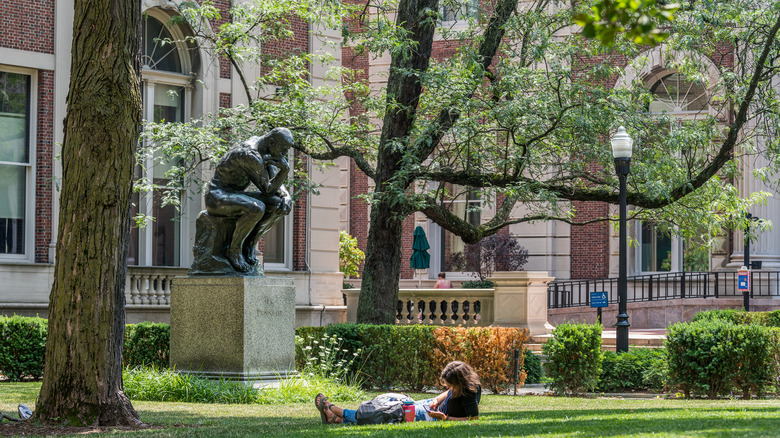The Minimum Salary You Need To Afford College In New York (Without Loans)
As student loan debt continues to plague many millennials (18.5 million Millennials still have outstanding student loan debt as of November 2024, according to the Education Data Initiative), younger generations are increasingly questioning if taking out student loans for college is financially worth it. Between rising tuition rates (some colleges hit $100,000 per year during the 2024-25 school year) and prolonged high interest rates affecting student loans, it can be more important than ever to calculate just how much college might cost you depending on where you decide to go to school.
For starters, it's important to understand the distinction between in-state and out-of-state tuition. This can be particularly significant when looking at state or city operated schools (as opposed to private universities). Many of these public college school systems aim to encourage local students to stay in-state for college by offering lower tuition rates than they offer their out-of-state applicants. Taking advantage of the residency benefits of the state or city system in your area can be the best and most affordable way to attend college without taking out expensive student loans. However, not all tuition fees are as affordable as others, even with in-state benefits. Plus, some states offer more advanced public university systems (including having more locations and available majors and programs) than others. Finding a combination of the right program for you, at the right price point for your family's budget, can be tricky. However, for those living in New York state, your options are looking bright.
New York tuition
You might be surprised to learn that New York (which is relatively famous for its high cost of living) state is actually one of the 37 U.S. states that falls below the $100,000 salary threshold required in order to afford in-state tuition. According to GOBankingRates, a family in New York needs to earn $98,291 in annual income in order to be able to afford to pay for in-state tuition without taking out student loans. While this is still above the national average salary of $63,795 and the average New York state salary of $74,870 (according to data from SoFi) it is still well within reach for two-income households. This means that new undergraduate students in New York can avoid the high interest rates and long-term ramifications of student loan debt.
Of course, it's important to realize the specifics of exactly how to achieve loan-free college in New York. Namely, this affordability is largely due to the low tuition rates that New York's state and city university systems charge their in-state students. According to the SUNY college system (the State University of New York) in-state tuition and fees for students at any of the system's 64 campuses was just $8,900 for the 2024-25 school year. More regionally, New York City's CUNY system (City University of New York) spans 25 campuses across the five boroughs. Their 2024-25 school year tuition rate for in-state undergraduate students is around $7,315 (with some varying fees depending on the specific campus).
Other costs to consider
It's important to remember that tuition and fees alone are not the sum total of your college expenses. For starters, the decision to either live on campus versus commuting can have a significant impact on the total amount you pay each year for your education. In-state students choosing to live on campus in the SUNY system can expect to pay almost $12,000 more per school year due to the increased cost of housing and food. Similarly, even if you choose not to live on campus, but still choose to attend a campus that is too far away from your home to commute, you will have to navigate housing prices in your selected geographic area. These housing costs can add, and fast. According to a December 2024 housing report from Zillow, the average asking rental price was up 3.4% compared to the same time in 2023, and overall rent prices are a whopping 33.1% higher than they were at the beginning of the pandemic. This can make finding affordable housing as a full-time student incredibly difficult.
Another cost consideration for college is something known as indirect costs. This includes just about everything surrounding your education. Essentially anything required to make your classes actually happen for you counts as an indirect cost. This means in-classroom things like textbooks, course materials, and supplies as well as out-of-classroom needs like transportation and personal expenses like clothing (i.e. work clothes for internships or interviews), living supplies (i.e. bedding, towels, etc.), or even bills (i.e. your phone, internet, etc.).


